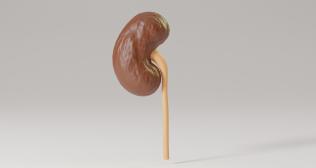
Balanoposthitis: Understanding the Symptoms, Causes, and Risk Factors
Introduction
Balanoposthitis is an inflammatory illness that involves the glans, that is, the head of the penis and the foreskin. While it is more prevalent than other diseases, most of the affected males may not be able to detect the symptoms early or perhaps get embarrassed to seek a doctor. In this blog, you will learn about balanoposthitis, its signs, causes, factors that may increase your risk of developing the condition, and ways of dealing with it.
What is balanoposthitis?
Balanoposthitis is a combination of two conditions – one, which includes balanitis (inflammation of the glans) and posthitis (inflammation of the foreskin). This issue is common with uncircumcised men, but anyone with a foreskin can have it.
Balanoposthitis usually presents with signs and symptoms of inflammation characterised by erythema, oedema, and tenderness but may also be asymptomatic and clinically occult and cause pain or stinging on erections or during intercourse. The good news is that the condition can be cured if the cause is determined, and the right attention is taken.
Symptoms of balanoposthitis
Common signs and symptoms include:
- Redness and swelling: The glans of the penis and the foreskin may be red and congested. This is what is most easily noticed.
- Pain or discomfort: The patient may have pain during urination or sexual intercourse because the area is inflamed and tender.
- Itching and irritation: Some people develop a need to scratch, and this in itself is more of a bother.
- Discharge: There may be some odour. Most of the time, this is a result of an infection.
- Tightness of the foreskin: In certain cases, it even becomes tight, and the head of the penis cannot be pulled back into the shaft (this is called phimosis), which will create more pain.
- Rashes or lesions: Sometimes, small ulcers or lesions may appear on the penis and may cause pain.
- Difficulty in retracting the foreskin: Over time, it may become difficult to retract the foreskin over the head of the penis, and this causes further inflammation.
What causes balanoposthitis?
Several factors may cause balanoposthitis, and the patient’s physician must determine the underlying cause. For instance:
- Poor hygiene: Balanoposthitis may be attributed primarily to the formation of smegma, a paste made out of dead skin cells, oil and other debris beneath the foreskin. Sanitising the area must be carried out constantly because if not, bacteria will be present, causing inflammation and infection.
- Infections: Infections are the chief known causes of balanoposthitis:
- Bacterial infections: Infections may occur due to Staphylococcus or Streptococcus bacteria, which are very common.
- Fungal infections: Bacterial and fungal infections that are commonly attributed to Candida often cause balanoposthitis.
- Sexually transmitted infections (STIs): Other conditions which are characterised by STIs may also produce symptoms like herpes, gonorrhoea, or syphilis.
- Irritants and allergens: One may end up developing inflammation on the skin due to exposure to some chemicals or products like soaps, lotion, and even washing powder.
- Underlying health conditions: Balanoposthitis is likely to develop, for example, in diabetic patients. Patients with diabetes are vulnerable to mild infections as elevated levels of sugar in the urine favour bacterial growth. Besides, such diseases as eczema or psoriasis produce skin inflammation, which might predispose the person to balanoposthitis.
Who is at risk?
Although balanoposthitis can affect anybody who has foreskin, there are predisposing factors that can cause the problem. Knowledge of these may assist in avoiding a recurrence or better control of the disability.
- Uncircumcised men: Due to the included part of the foreskin in balanoposthitis, uncircumcised men are more vulnerable to it as compared to circumcised men. Smegma may thicken and cause an infection if it is not washed properly.
- Poor hygiene practices: Lack of cleaning of the genital area or improper cleaning may cause the accumulation of bacteria and irritants that, in turn, cause inflammation.
- Diabetes: Balanoposthitis is another predisposing factor that occurs due to infection in those with diabetes, including poor blood sugar control.
- Sexual activity: When having sexual intercourse, one exposes the genital area to bacterial or fungal infections, which increases one’s risk for balanoposthitis.
- Skin conditions: A man with dermatitis or eczema may develop balanoposthitis because the condition makes tissues in the area inflamed and irritated easily.
- Obesity: Being overweight can also complicate cleanliness as well as contribute to such consequences as balanoposthitis.
Conclusion
Balanoposthitis is a condition through which many men will pass one time in their lives, though this requires one to seek medical attention. Most illnesses, if well handled and prevented, are not very difficult to deal with at all. Minimising the incidence of balanoposthitis and promoting genital health requires proper washing and treating most existing health problems.



















